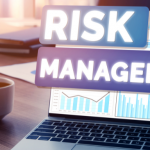Executive Summary
-
AI-driven predictive analytics is revolutionizing risk management in the financial sector.
-
Financial institutions are leveraging AI to predict and mitigate potential risks, enhancing decision-making.
-
This article explores the benefits, challenges, and strategic insights of using predictive analytics in risk management.
-
Learn how AI tools are transforming risk management processes and the future outlook for the industry.
Introduction
In a rapidly evolving financial landscape, risk management is more critical than ever. Financial institutions face a myriad of challenges, from market volatility to regulatory compliance. The question arises: how can technology, particularly AI-driven predictive analytics, be harnessed to mitigate these risks effectively? This article delves into the significance of AI in risk management, offering insights for investors, financial experts, and corporate leaders. Readers will discover how AI-driven predictive analytics can forecast risks, streamline operations, and ultimately safeguard financial interests.
Definitions / Context
AI-driven predictive analytics involves using advanced algorithms and machine learning to analyze data patterns and predict future outcomes. In the context of financial risk management, this means identifying potential risks before they materialize, allowing institutions to take proactive measures.
Benefits / Pros
-
Proactive Risk Identification: AI can analyze vast amounts of data to identify emerging risks, allowing financial institutions to address issues before they escalate.
-
Enhanced Decision-Making: By providing accurate forecasts, AI helps decision-makers choose strategies that minimize risk exposure.
-
Cost Efficiency: Automation of risk management processes reduces the need for manual intervention, saving time and resources.
-
Regulatory Compliance: AI tools can ensure that financial operations adhere to evolving regulations, reducing the risk of non-compliance penalties.
Risks / Cons / Challenges
-
Data Privacy Concerns: Handling large volumes of sensitive data raises privacy issues that need careful management.
-
Algorithmic Bias: AI models can inadvertently perpetuate existing biases if not properly trained and tested.
-
Integration Complexity: Implementing AI solutions requires significant infrastructure and training, posing challenges for some organizations.
Step-by-Step Process
How to Implement AI-Driven Predictive Analytics in Risk Management
-
Data Collection: Gather and organize historical and real-time data.
-
Model Selection: Choose the appropriate AI models that suit the organization’s risk profile.
-
Training and Validation: Train models with historical data and validate their accuracy.
-
Integration: Embed AI tools into existing risk management systems.
-
Continuous Monitoring: Regularly update models and monitor their performance to ensure accuracy.
A leading global bank implemented AI-driven predictive analytics to enhance its risk management framework. By integrating AI tools, the bank reduced its credit risk exposure by 30% within the first year, demonstrating the effectiveness of predictive analytics in real-world applications.
Expert Tips / Strategic Insights
-
Stay Updated: Continuously monitor AI advancements to incorporate the latest technologies.
-
Collaborate with Experts: Partner with AI specialists to tailor solutions to specific organizational needs.
-
Prioritize Data Quality: Ensure that data used for training and analysis is accurate and comprehensive.
Tools / Resources / Calculators
-
Risk Management Software: Explore tools like SAS Risk Management and IBM OpenPages.
-
AI Training Platforms: Use platforms like Coursera and Udacity for AI and machine learning courses.
-
Data Privacy Frameworks: Refer to GDPR and CCPA guidelines for data protection compliance.
Conclusion
AI-driven predictive analytics holds immense potential in transforming financial risk management. By proactively identifying risks, enhancing decision-making, and ensuring compliance, AI tools are indispensable for modern financial institutions. As the technology evolves, staying informed and adaptable is crucial for leveraging its full benefits.


















